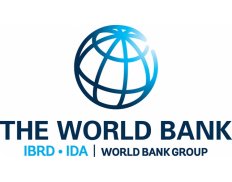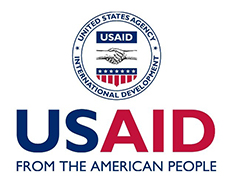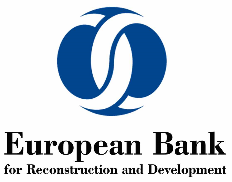
Support the Lake Tanganyika Authority to Prepare a Strategic Environmental and Social Impact Assessment of the Lake Tanganyika Transport and Sustainability Program
Details
Location:Burundi, Dem. Rep. Congo, Tanzania, Zambia
Category:Consulting services
Status:Awarded
Sectors:Environment & NRM, Social Development, Water Navigation & Ports & Shipping, Transport
Associated tenders • 0
Status
Date
Description
Request for expression of interest for selection # 1255859
SELECTION FOR CONSULTANTS BY THE WORLD BANK GROUP
REQUEST FOR EXPRESSIONS OF INTEREST
.
Electronic Submissions through World Bank Group eConsultant2
https://wbgeconsult2.worldbank.org/wbgec/index.html
.
Assignment Title: CONSULTANTS TO SUPPORT THE LAKE TANGANYIKA AUTHORITY TO PREPARE A STRATEGIC ENVIRONMENTAL AND SOCIAL IMPACT ASSESSMENT OF THE LAKE TANGANYIKA TRANSPORT AND SUSTAINABILITY PROGRAM (TANZANIA, ZAMBIA, BURUNDI AND THE DEMOCRATIC REPUBLIC OF THE CONGO)
.
A. BACKGROUND
.
1. Lake Tanganyika lies at an elevation of about 772m above mean sea level in the Western part of the Great Rift Valley. With a length of 673km, it represents the longest lake in the world. It averages 50km in width (at its widest it is 72km), has a surface area of 32,900 square kilometres (km2), and a shoreline length of 1,828km. It is, after Lake Victoria, Africas second largest lake and the worlds second deepest (1,471m). The lake is divided between four countries Burundi, Democratic Republic of the Congo (DRC), Tanzania and Zambia, with the DRC (45 percent) and Tanzania (41 percent) with the largest shoreline. Excepting a part of the eastern and northern coast, the lake is confined by the steep sides of the rift valley, most prominent on its western edge which reaches 2,000 meters above the shoreline. This limits the lakes catchment area to approximately 231,000 km2.
2. Transport on the lake is currently very challenging, with no up-to-date navigational charts, no functioning aids to navigation, or landing lights, no search and rescue services, limited information on current and forecast weather conditions, and no modern efficient vessels. In addition, the ports on Lake Tanganyika have dilapidated superstructure and sub-structure, and face access issues both on the land side and the lake side. The latter due to draught limitations from accumulated sedimentation in all the ports. There are also localized pollution hotspots, e.g. around the dense populated north of the Lake (which receives run-off from Bujumbura and the Rusizi Plain) and Kigoma bay.
OBJECTIVES OF THE ASSIGNMENT
3. The primary objective of the assignment is to support the Lake Tanganyika Authority (LTA) to prepare a strategic environmental and social impact assessment for the Lake Tanganyika basin, encompassing all activities envisaged under the LTTP, and all ongoing and planned interventions within the lake and its catchment supported by development partners such as WB (including Great Lakes Trade Facilitation SOP, LT Environmental Program), AfDB, JICA, TMEA, EIB, etc., which are all mentioned in the introductory paragraphs.
4. The secondary objectives of the assignment are as follows:
(i) Support the LTA to document existing social, gender (including gender-based violence and child abuse) and environmental baseline information in the program and project catchment area;
(ii) Support the LTA to review the different national, regional and international policy, legal, and administrative framework relevant to the social, gender (including gender-based violence and child abuse), and environmental management of the program and project;
(iii) Assist the LTA to ascertain all the impacts, both positive and negative, on the social, gender (including gender-based violence and child abuse), and environmental fronts, associated with the different options or alternatives and cumulative impacts of all ongoing and planned interventions within the lake and its catchment that overlap in time and space with LTTP;
(iv) Support the LTA in proposing feasible prevention and mitigation measures for the negative impacts identified on the social and environmental fronts, not already identified in the site specific ESIAs and RAPs;
(v) Support the LTA to undertake appropriate public consultation and document the public consultation and disclosure requirements; and
(vi) Support the LTA to prepare the SESIA, the ESMF including an RPF (an outline of both of the latter documents is provided in Annex B and C respectively) and the institutional structure necessary for substantive oversight during the implementation phase, including costs required for effective implementation of regional oversight arrangements.
B. SCOPE OF WORK
5. To undertake the assignment, the Consultant will at a minimum carry out the following key tasks in support the LTA:
6. Task A: Program Analysis: Support the LTA to ascertain the current states of preparation and implementation of the different components and activities to be implemented during the various series of the program and projects as well as any other existing and proposed/planned development interventions in the lake and its catchment area that will overlap in time and space with LTTP from the planning through construction, decommissioning, to operation. This task is intended to contextualize the general project detail and will mainly be sourced from existing studies and documentation. The programs direct and indirect areas of influence will also be described under this task.
7. Task B: Situation Analysis: Support the LTA to describe and analyze the baseline environmental and social characteristics of Lake Tanganyika and its catchment
8. Task C: Policy, Legal and Institutional Analysis: Support the LTA to describe and analyze the administrative, policy and legal frameworks as well as standards governing social and environmental issues at the international , regional and national levels in each of the four riparian countries, including but not limited to: the environmental quality, solid and liquid waste management issues, air quality issues, health and safety, protection of sensitive areas, land use control at the national and local level as well as the systems governing ecological and socio-economic issues.
9. Task D: Impacts Analysis: Support the LTA to identify the potential social and environmental impacts that could arise from the implementation of the program on the natural habitats, human beings, built environment and ecosystems through the different phases.
10. Task E: Occupational Health and Safety Analysis: Support the LTA to analyze and describe strategic occupational and community health and safety concerns.
11. Task E: Public Participation, Consultation and Disclosure: Support the LTA to undertake full public participation and meaningful consultation on the positive and negative impacts of the project amongst key stakeholders, and disclose documents as they become cleared for public consumption in all countries.
12. Task F: Prevention and Mitigation Measures: Support the LTA to propose prevention and mitigation measures to the identified social and environmental impacts of the proposed program and project. This should include prevention and mitigation measures under a range of different potential climate change scenarios.
13. Task G: Strengthening activity specific Environmental and Social Management Plan (ESMP): Support the LTA to outline necessary measures to be included in activity specific ESMPs and subsequently implemented to prevent and mitigate the negative social and environmental impacts identified in the SESIA. Proposals and recommendations are expected as needed in three main areas: (i) prevention and mitigation measures; (ii) institutional strengthening and training; and (iii) monitoring.
C. KEY STAFF
14. The assignment is intended to be undertaken by a very experienced and high-quality firm (or a consortia), familiar with undertaking assessments of this type, both in the region and internationally. The Consultant will be expected to provide approximately 10-person months of key staff inputs. The estimate of the key person requirements is only indicative and could be construed as skill mix requirements for these services. The contract for this assignment will be a lump sum contract, administered by the World Bank.
15. Whilst the Consultant is responsible for proposing a senior and high-quality team appropriate for undertaking the assignment as envisaged in the Terms of Reference, to the required standard, it is likely that the team, as a minimum, will include the following key staff, which should ideally be full-time employees of the consulting firm(s): (i) SESIA Team Leader; (ii) Port Engineer; (iii) Water Resource Management Specialist; (iv) Eco-Hydrologist; (v) Fisheries Expert; (vi) Social Development Specialist (vii) Ornithologist/Birds Specialist; (viii) Occupational Health and Safety Specialist; (ix) Wetland Management Specialist (x) Transport Economist (xi) Institutional and regulatory expert; and (xii) GIS Specialist and (xiii) Gender Specialist
FUNDING SOURCE
The World Bank Group intends to finance the assignment / services described below under the following:
- BANK BUDGET
INDIVIDUAL / FIRM PROFILE
The consultant will be a firm.
SUBMISSION REQUIREMENTS
The World Bank Group now invites eligible firms to indicate their interest in providing the services. Interested firms must provide information indicating that they are qualified to perform the services (brochures, description of similar assignments, experience in similar conditions, availability of appropriate skills among staff, etc. for firms; CV and cover letter for individuals). Please note that the total size of all attachments should be less than 5MB. Consultants may associate to enhance their qualifications.
Interested firms are hereby invited to submit expressions of interest.
Expressions of Interest should be submitted, in English, electronically through World Bank Group eConsultant2 (https://wbgeconsult2.worldbank.org/wbgec/index.html)
NOTES
Following this invitation for Expression of Interest, a shortlist of qualified firms will be formally invited to submit proposals. Shortlisting and selection will be subject to the availability of funding.
Only those firms which have been shortlisted will receive notification. No debrief will be provided to firms which have not been shortlisted.
REQUEST FOR EXPRESSIONS OF INTEREST
.
Electronic Submissions through World Bank Group eConsultant2
https://wbgeconsult2.worldbank.org/wbgec/index.html
.
Assignment Title: CONSULTANTS TO SUPPORT THE LAKE TANGANYIKA AUTHORITY TO PREPARE A STRATEGIC ENVIRONMENTAL AND SOCIAL IMPACT ASSESSMENT OF THE LAKE TANGANYIKA TRANSPORT AND SUSTAINABILITY PROGRAM (TANZANIA, ZAMBIA, BURUNDI AND THE DEMOCRATIC REPUBLIC OF THE CONGO)
.
A. BACKGROUND
.
1. Lake Tanganyika lies at an elevation of about 772m above mean sea level in the Western part of the Great Rift Valley. With a length of 673km, it represents the longest lake in the world. It averages 50km in width (at its widest it is 72km), has a surface area of 32,900 square kilometres (km2), and a shoreline length of 1,828km. It is, after Lake Victoria, Africas second largest lake and the worlds second deepest (1,471m). The lake is divided between four countries Burundi, Democratic Republic of the Congo (DRC), Tanzania and Zambia, with the DRC (45 percent) and Tanzania (41 percent) with the largest shoreline. Excepting a part of the eastern and northern coast, the lake is confined by the steep sides of the rift valley, most prominent on its western edge which reaches 2,000 meters above the shoreline. This limits the lakes catchment area to approximately 231,000 km2.
2. Transport on the lake is currently very challenging, with no up-to-date navigational charts, no functioning aids to navigation, or landing lights, no search and rescue services, limited information on current and forecast weather conditions, and no modern efficient vessels. In addition, the ports on Lake Tanganyika have dilapidated superstructure and sub-structure, and face access issues both on the land side and the lake side. The latter due to draught limitations from accumulated sedimentation in all the ports. There are also localized pollution hotspots, e.g. around the dense populated north of the Lake (which receives run-off from Bujumbura and the Rusizi Plain) and Kigoma bay.
OBJECTIVES OF THE ASSIGNMENT
3. The primary objective of the assignment is to support the Lake Tanganyika Authority (LTA) to prepare a strategic environmental and social impact assessment for the Lake Tanganyika basin, encompassing all activities envisaged under the LTTP, and all ongoing and planned interventions within the lake and its catchment supported by development partners such as WB (including Great Lakes Trade Facilitation SOP, LT Environmental Program), AfDB, JICA, TMEA, EIB, etc., which are all mentioned in the introductory paragraphs.
4. The secondary objectives of the assignment are as follows:
(i) Support the LTA to document existing social, gender (including gender-based violence and child abuse) and environmental baseline information in the program and project catchment area;
(ii) Support the LTA to review the different national, regional and international policy, legal, and administrative framework relevant to the social, gender (including gender-based violence and child abuse), and environmental management of the program and project;
(iii) Assist the LTA to ascertain all the impacts, both positive and negative, on the social, gender (including gender-based violence and child abuse), and environmental fronts, associated with the different options or alternatives and cumulative impacts of all ongoing and planned interventions within the lake and its catchment that overlap in time and space with LTTP;
(iv) Support the LTA in proposing feasible prevention and mitigation measures for the negative impacts identified on the social and environmental fronts, not already identified in the site specific ESIAs and RAPs;
(v) Support the LTA to undertake appropriate public consultation and document the public consultation and disclosure requirements; and
(vi) Support the LTA to prepare the SESIA, the ESMF including an RPF (an outline of both of the latter documents is provided in Annex B and C respectively) and the institutional structure necessary for substantive oversight during the implementation phase, including costs required for effective implementation of regional oversight arrangements.
B. SCOPE OF WORK
5. To undertake the assignment, the Consultant will at a minimum carry out the following key tasks in support the LTA:
6. Task A: Program Analysis: Support the LTA to ascertain the current states of preparation and implementation of the different components and activities to be implemented during the various series of the program and projects as well as any other existing and proposed/planned development interventions in the lake and its catchment area that will overlap in time and space with LTTP from the planning through construction, decommissioning, to operation. This task is intended to contextualize the general project detail and will mainly be sourced from existing studies and documentation. The programs direct and indirect areas of influence will also be described under this task.
7. Task B: Situation Analysis: Support the LTA to describe and analyze the baseline environmental and social characteristics of Lake Tanganyika and its catchment
8. Task C: Policy, Legal and Institutional Analysis: Support the LTA to describe and analyze the administrative, policy and legal frameworks as well as standards governing social and environmental issues at the international , regional and national levels in each of the four riparian countries, including but not limited to: the environmental quality, solid and liquid waste management issues, air quality issues, health and safety, protection of sensitive areas, land use control at the national and local level as well as the systems governing ecological and socio-economic issues.
9. Task D: Impacts Analysis: Support the LTA to identify the potential social and environmental impacts that could arise from the implementation of the program on the natural habitats, human beings, built environment and ecosystems through the different phases.
10. Task E: Occupational Health and Safety Analysis: Support the LTA to analyze and describe strategic occupational and community health and safety concerns.
11. Task E: Public Participation, Consultation and Disclosure: Support the LTA to undertake full public participation and meaningful consultation on the positive and negative impacts of the project amongst key stakeholders, and disclose documents as they become cleared for public consumption in all countries.
12. Task F: Prevention and Mitigation Measures: Support the LTA to propose prevention and mitigation measures to the identified social and environmental impacts of the proposed program and project. This should include prevention and mitigation measures under a range of different potential climate change scenarios.
13. Task G: Strengthening activity specific Environmental and Social Management Plan (ESMP): Support the LTA to outline necessary measures to be included in activity specific ESMPs and subsequently implemented to prevent and mitigate the negative social and environmental impacts identified in the SESIA. Proposals and recommendations are expected as needed in three main areas: (i) prevention and mitigation measures; (ii) institutional strengthening and training; and (iii) monitoring.
C. KEY STAFF
14. The assignment is intended to be undertaken by a very experienced and high-quality firm (or a consortia), familiar with undertaking assessments of this type, both in the region and internationally. The Consultant will be expected to provide approximately 10-person months of key staff inputs. The estimate of the key person requirements is only indicative and could be construed as skill mix requirements for these services. The contract for this assignment will be a lump sum contract, administered by the World Bank.
15. Whilst the Consultant is responsible for proposing a senior and high-quality team appropriate for undertaking the assignment as envisaged in the Terms of Reference, to the required standard, it is likely that the team, as a minimum, will include the following key staff, which should ideally be full-time employees of the consulting firm(s): (i) SESIA Team Leader; (ii) Port Engineer; (iii) Water Resource Management Specialist; (iv) Eco-Hydrologist; (v) Fisheries Expert; (vi) Social Development Specialist (vii) Ornithologist/Birds Specialist; (viii) Occupational Health and Safety Specialist; (ix) Wetland Management Specialist (x) Transport Economist (xi) Institutional and regulatory expert; and (xii) GIS Specialist and (xiii) Gender Specialist
FUNDING SOURCE
The World Bank Group intends to finance the assignment / services described below under the following:
- BANK BUDGET
INDIVIDUAL / FIRM PROFILE
The consultant will be a firm.
SUBMISSION REQUIREMENTS
The World Bank Group now invites eligible firms to indicate their interest in providing the services. Interested firms must provide information indicating that they are qualified to perform the services (brochures, description of similar assignments, experience in similar conditions, availability of appropriate skills among staff, etc. for firms; CV and cover letter for individuals). Please note that the total size of all attachments should be less than 5MB. Consultants may associate to enhance their qualifications.
Interested firms are hereby invited to submit expressions of interest.
Expressions of Interest should be submitted, in English, electronically through World Bank Group eConsultant2 (https://wbgeconsult2.worldbank.org/wbgec/index.html)
NOTES
Following this invitation for Expression of Interest, a shortlist of qualified firms will be formally invited to submit proposals. Shortlisting and selection will be subject to the availability of funding.
Only those firms which have been shortlisted will receive notification. No debrief will be provided to firms which have not been shortlisted.

Similar tenders
By Locations
Funding agency:
USAID
Status:
awarded
Location:
Algeria, Angola, Benin, Botswana, Burkina Faso, Burundi, Cameroon, Cape Verde, Central African Republic, Chad, Comoros, Congo, Cote d'Ivoire, Dem. Rep. Congo, Djibouti, Egypt, Equatorial Guinea, Eritrea, Eswatini (Swaziland), Ethiopia, French Southern Territory, Gabon, Gambia, Ghana, Guinea, Guinea-Bissau, Kenya, Lesotho, Liberia, Libya, Madagascar, Malawi, Mali, Mauritania, Mauritius, Mayotte, Morocco, Mozambique, Namibia, Niger, Nigeria, Reunion, Rwanda, Saint Helena, Sao Tome and Principe, Senegal, Seychelles, Sierra Leone, Somalia, South Africa, Sudan, Tanzania, Togo, Tunisia, Uganda, Western Sahara, Zambia, Zimbabwe
Funding agency:
WB
Status:
awarded
Location:
Algeria, Angola, Benin, Botswana, Burkina Faso, Burundi, Cameroon, Cape Verde, Central African Republic, Chad, Comoros, Congo, Cote d'Ivoire, Dem. Rep. Congo, Djibouti, Egypt, Equatorial Guinea, Eritrea, Ethiopia, French Southern Territory, Gabon, Gambia, Ghana, Guinea, Guinea-Bissau, Kenya, Lesotho, Liberia, Libya, Madagascar, Malawi, Mali, Mauritania, Mauritius, Mayotte, Morocco, Mozambique, Namibia, Niger, Nigeria, Reunion, Rwanda, Saint Helena, Sao Tome and Principe, Senegal, Seychelles, Sierra Leone, Somalia, South Africa, South Sudan, Sudan, Eswatini (Swaziland), Tanzania, Togo, Tunisia, Uganda, Western Sahara, Zambia, Zimbabwe
By Sectors



